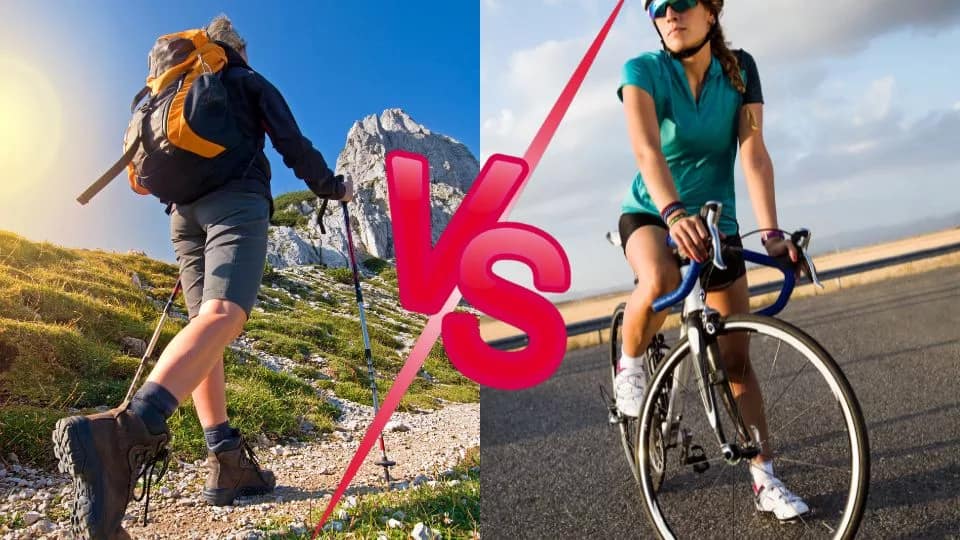
Hiking and cycling are two excellent forms of aerobic exercise that can help you stay in great cardiovascular shape. But which activity works which muscles harder? Is one better than the other for building strength and endurance?
As both hiking and cycling provide an incredible aerobic workout for your cardiovascular system and legs, the difference lies more in the additional muscle groups each activity targets. The good news is that by understanding the muscular demands of hiking muscles vs cycling muscles, you can incorporate both into your weekly workout routine to build full-body fitness.
Table of Contents
Hiking Engages the Lower Body, Core, and Upper Body

Hiking is a weight-bearing exercise that engages multiple lower-body muscle groups with each step, especially when tackling hilly and uneven terrain. Going uphill hiking in particular, can provide an intensive strengthening and endurance workout for the glutes, quadriceps, hamstrings, and calves.
The constant motion of hiking also engages the hip flexors to lift the knees and the abdominal muscles to stabilize your core. Add in a heavy backpack, and hiking can further challenge the leg, back, and shoulder muscles by increasing the resistance load.
Some key ways that hiking builds lower body strength include:
- Uphill climbing works the glutes, quads, hamstrings and calves eccentrically to lower your body and then concentrically to push you up. Hiking downhill then works the muscles eccentrically again to control your descent. This combo provides greater muscular endurance.
- Hiking on uneven terrain engages smaller stabilizing muscles in the hips, knees and ankles that don’t get worked in everyday movement. These muscles contribute to balance, joint stability and injury prevention.
- Carrying a backpack adds extra resistance to tone and strengthen the back, glutes, quads, abs, arms and shoulders. Heavier packs increase strength gains.
So if you’re looking for an intensive lower-body workout, hit the trails with some big hills! Combine regular hiking with weighted backpack hiking to build muscular endurance in the legs, core and back for everyday life.
In addition to the lower body, hiking engages the upper body as well. Using trekking poles activates the shoulders, chest, arms and upper back to propel you forward and upward. Scrambling over rocks and climbing on all fours recruits the arms, shoulders and grip strength. This makes hiking a more full-body workout compared to cycling.
Cycling Targets Quads, Glutes, Hamstrings

Cycling primarily works the major muscles of the lower body, especially the quads, glutes and hamstrings. When pedaling, these muscle groups contract concentrically on the downstroke to generate power and push the crankarms.
On the recovery upstroke, they work eccentrically to control the motion. This continuous pedaling action leads to excellent muscular endurance in the cycling-specific muscles of the legs.
Here are some of the key ways cycling builds leg strength:
- Quadriceps – The quads straighten the knee joint to provide the main pedaling power on a bike. They contract concentrically when pushing down and eccentrically when lifting the knee.
- Glutes – The glutes extend the hip joint and work in synergy with the quads during the pedal downstroke. They’ll get a serious workout climbing steep hills.
- Hamstrings – The hamstrings flex the knee joint and work eccentrically to control the leg during the recovery phase of the pedal stroke.
- Calves – The calf muscles plantarflex the ankle on the downstroke and dorsiflex on the upstroke. Standing climbing engages the calves more.
Cycling also engages the hip flexors to lift the knee and stabilizer muscles around the knee and ankle for pedaling efficiency. But the quads, glutes and hamstrings take most of the work during a road or mountain bike ride.
So, jumping on a bike provides targeted strength training for the major cycling muscles of the legs. Climbing hills, sprinting and standing cycling further increase the muscular burn.
Key Muscles Worked
| Muscle Group | Muscle | Hiking | Cycling |
|---|---|---|---|
| Quads | Rectus femoris | ✅️ | ✅️✅️ |
| Vastus lateralis | ✅️ | ✅️✅️ | |
| Vastus medialis | ✅️ | ✅️✅️ | |
| Vastus intermedius | ✅️ | ✅️✅️ | |
| Hamstrings | Biceps femoris | ✅️ | ✅️ |
| Semitendinosus | ✅️ | ✅️ | |
| Semimembranosus | ✅️ | ✅️ | |
| Glutes | Gluteus maximus | ✅️✅️ | ✅️✅️ |
| Gluteus medius | ✅️✅️ | ✅️ | |
| Gluteus minimus | ✅️✅️ | ✅️ | |
| Calves | Gastrocnemius | ✅️✅️ | ✅️ |
| Soleus | ✅️✅️ | ✅️ | |
| Core | Rectus abdominis | ✅️✅️ | ✅️ |
| Internal/External obliques | ✅️✅️ | ✅️ | |
| Erector spinae | ✅️✅️ | ✅️ | |
| Shoulders | Deltoids | ✅️ | |
| Trapezius | ✅️ | ||
| Back | Latissimus dorsi | ✅️ | |
| Rhomboids | ✅️ |
Hiking Builds More Full-Body and Functional Strength
While cycling provides an awesome aerobic workout focused mainly on the lower body, hiking works the legs along with the back, arms and core. This makes hiking better for building integrated functional strength that applies directly to everyday movement.
Here are some key reasons why hiking can build more balanced full-body fitness:
- Total body workout – Every step engages the core, arms, legs, glutes and back to stabilize, propel and balance the body. The range of motion required is very functional.
- Weight-bearing – Carrying your own body weight against gravity plus a heavy backpack provides bone and muscular strengthening that non-weight-bearing cycling does not.
- Core engagement – The constant motion of hiking works the abs, obliques and back to stabilize the body over varied terrain. This is great for posture and injury prevention.
- Upper body workout – Trekking poles engage the shoulders, chest, arms and upper back. Scrambling over rocks and climbing activates the arms, grip and back muscles more.
- Balance and proprioception – Hiking over rocks and uneven ground builds balance, joint stability and body awareness – greatly improving overall coordination and stability.
So if you’re looking to build multi-plane strength that applies directly to everyday movement and athletic performance, hiking provides an excellent functional workout. Cycling mainly trains the cycling muscles of the legs while missing key upper-body benefits.
Related Articles:
Combine Cycling and Hiking for Full Fitness

Is hiking or cycling better for building strength and endurance? The answer is that both activities provide excellent but complementary total-body benefits. Like most forms of cross-training, combining hiking and cycling can give you the most balanced and effective workout.
Some great ways to incorporate hiking and cycling for maximum fitness include:
- Alternate between hiking and cycling days or weeks during training
- Participate in multisport events that combine mountain biking and trail running
- Commute by bike during the week and hike or backpack on weekends
- Use road cycling for intense cardio then hiking for functional strength
- Complement road cycling with mountain biking for varied terrain
- Start hiking and backpacking trips with a cycling approach for cross-training
The important thing is to focus on your individual fitness goals and choose activities that target your needs. Both hiking and cycling can build incredible endurance, strength and overall health. Combine smart periodized training with proper rest for maximal results.
The next time you need to improve your cardio, strengthen your legs or simply get outside for an uplifting workout, consider going for a scenic hike or bike ride. You really can’t go wrong with either activity! Just be sure to pick the trails and terrain that provide the muscle-building challenge you want.
Hiking and cycling are two sides of the cross-training coin. Integrate both into your routine and you’ll build well-rounded functional fitness to thrive in any activity.
The Muscular Differences ─ Cycling vs hiking
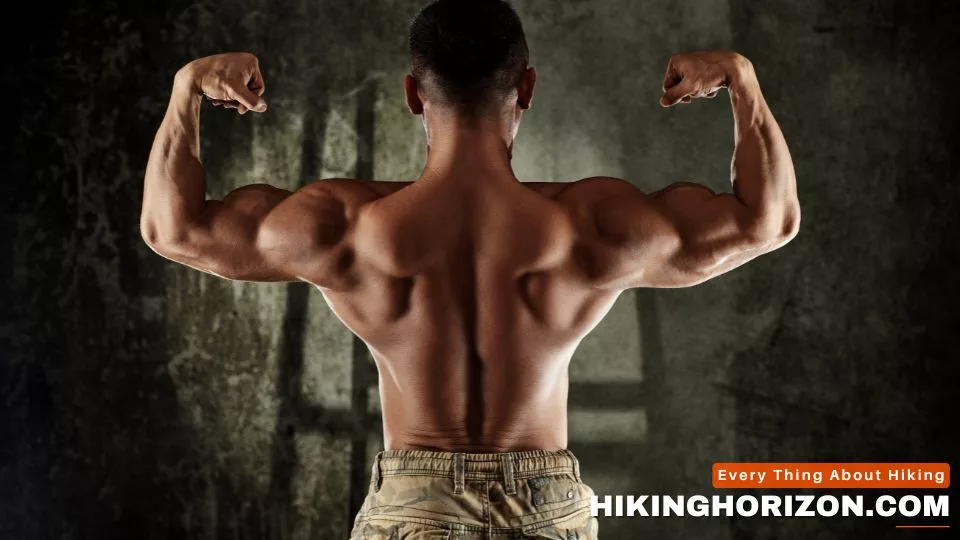
Now that we’ve covered the general muscle-building benefits of hiking and cycling let’s take a closer look at the specific muscular differences between the two activities. Understanding which muscles each one targets can help you create the most effective training plan.
Hiking Works More Muscle Groups
Here are the main muscles targeted by hiking, especially when navigating hills and uneven terrain while carrying a backpack:
- Glutes – Extend the hip and propel the body uphill. Also stabilize hip alignment during downhill hiking.
- Quads – Straighten the knee to lift the leg and body upwards with each step. Control descent on downhill sections.
- Hamstrings – Flex the knee for a full stride length. Eccentrically control knee extension on downhills.
- Calves – Plantarflexes the ankle to push off with each step. Control the foot rolling from heel to toe while descending.
- Hip flexors – Lift the thigh and swing the leg forward with each step. Important for maintaining stride rhythm.
- Abdominals – Brace the core to stabilize the spine over varied terrain. Resist torso rotation while swinging arms.
- Obliques – Aid the abs in resisting rotation and lateral flexion of the spine while hiking.
- Lower back – Help stabilize and extend the spine with each stride. Prevents hyperextension while wearing a backpack.
- Shoulders – Retract and protract the shoulders while swinging trekking poles. Stabilize backpack shoulder straps.
- Biceps/triceps – Bend and straighten the elbows while swinging poles and arms. Helps propel the body upwards.
- Forearms – Grip trekking poles. Used for scrambling over rocks and pulling/pushing the body up inclines.
- Trapezius – Elevate the shoulders while bearing backpack straps. Hold head upright.
As you can see, hiking engages a wide range of upper and lower body musculature, making it excellent functional strength training.
Cycling Focuses on Lower Body
Here are the main muscle groups strengthened by cycling:
- Quadriceps – Produce the main pedaling power by extending the knee joint while pushing down.
- Glutes – Extend the hip joint and work with the quads on the pedal downstroke.
- Hamstrings – Flex the knee joint and control leg recovery between pedal strokes.
- Calves – Activate while pedaling to point the toes downward. Engage more when climbing.
- Hip flexors – Lift the thigh and pull the knee upwards to begin the pedal stroke.
- Lower back – Helps stabilize the bent-over cycling posture. Prevents hyperextension.
- Abdominals – Activated moderately to stabilize the core in a cycling position. Not a major focus.
Cycling puts the emphasis heavily on the quads, glutes and hamstrings for power production, with the calves and hip flexors playing a secondary role. The core provides some stabilization but the upper body is barely involved.
So while excellent for building cycling-specific leg strength, cycling works fewer total muscles than hiking. Adding upper body cross-training can help compensate.
Terrain Comparison
| Terrain | Hiking | Cycling |
|---|---|---|
| Flat ground | Decent workout | Ideal for speed |
| Rolling hills | Engages glutes/quads more | Manageable but slower |
| Steep hills | Intense leg workout | Difficult, very slow |
| Mountains | Very strenuous, increased cardio | Challenging, requires stamina |
| Rocky ground | Works stabilizer muscles | Risk of losing control |
| Sand | More glute/calf effort | Tires sink in, very slow |
| Mud | Demanding stability work | Wheels can slip easily |
| Forest | Challenging footing | Requires technical skills |
| Desert | Increased cardiovascular strain | Overheating risk |
| Snow | Burns more calories | Traction issues |
| Swamp | Intense lower body workout | Impassable for bikes |
Maximizing & Building Muscles - Hiking vs Biking
Hopefully, this breakdown gives you a good sense of which muscles hiking and cycling target. Here are some final tips for maximizing strength gains from each activity:
For building hiking-specific strength:
- Incorporate hills and varied terrain to challenge muscles in multiple planes of motion
- Wear a weighted backpack to increase resistance load on the legs, back and shoulders
- Use trekking poles to actively engage the upper body while hiking
- Focus on eccentrically controlling downhill sections to build muscular endurance
- Strengthen your core and hips to improve stability and balance over uneven ground
For developing stronger cycling muscles:
- Include hill climbs or intervals to spike muscle loading and effort
- Vary cadence and add standing cycling to alter pedaling dynamics
- Do concentric-focused strength training like squats and lunges
- Include eccentric exercises like Nordic hamstring lowers to complement cycling
- Stretch hip flexors, quads and calves, which tighten from cycling
For balanced full-body fitness:
- Periodize training to alternate focus between hiking and cycling every 4-6 weeks
- Cross-train with swimming or rowing to engage the upper body
- Perform yoga or Pilates to improve core and postural strength
- Add resistance training for major muscle groups 2-3x per week
- Pay close attention to nutrition and recovery to support different training demands
By being mindful of your training goals and the muscular demands of hiking vs cycling, you can develop a program that keeps you strong, fit and injury-free year-round. Mix it up and find what works for you!
Hiking vs Cycling ─ Calories Burned
Hiking and cycling are great forms of exercise to burn calories and get your heart pumping. As a hiker or a cyclist, you can choose either activity to improve your cardio and strengthen your legs. But which activity actually burns more calories?
Overall, hiking tends to burn more calories per mile compared to cycling. On average, a 155 lb person will burn around 368 calories per hour of hiking. The calories burned in hiking can vary based on the difficulty of the terrain, your body weight, and the weight of your backpack. Cycling at a moderate pace may burn around 292 calories per hour. Cycling on flat ground or downhill does not provide as much of cardio and calorie burn as hiking on hilly terrain.
While cycling may burn fewer calories per mile, you can often travel at faster speeds for more miles covered. So, for cyclists going over 15 mph, the total calories burned during cycling may exceed hiking. Hiking on flat ground at 2 mph would burn fewer calories than biking 10+ miles.
Both hiking and cycling are low-impact, weight-bearing exercises. Cycling poses less risk for knee pain and injuries compared to the eccentric muscle contractions of hiking downhill. But hikers strengthen legs more from the continuous impact.
Ultimately, either activity can be great for cardio, leg strength, and weight loss. Choose hiking or cycling based on your fitness goals and preferences for outdoor adventure. Combine the two for cross-training and maximum calorie burn!
| Activity | 30 mins | 60 mins | 90 mins |
|---|---|---|---|
| Hiking (2.5 mph, no pack) | 185 cal | 370 cal | 555 cal |
| Hiking (2.5 mph, 30 lb pack) | 295 cal | 590 cal | 885 cal |
| Hiking (3.5 mph, no pack) | 222 cal | 444 cal | 666 cal |
| Hiking (3.5 mph, 30 lb pack) | 333 cal | 666 cal | 999 cal |
| Cycling (leisurely <10 mph) | 148 cal | 296 cal | 444 cal |
| Cycling (moderate 10-11.9 mph) | 222 cal | 444 cal | 666 cal |
| Cycling (vigorous 12-13.9 mph) | 259 cal | 518 cal | 777 cal |
| Cycling (fast >14 mph) | 296 cal | 592 cal | 888 cal |
Integrating Hiking and Cycling burns more calories

To give you some ideas for effectively combining hiking and cycling training, here are a few sample schedules that blend both for optimal strength and endurance:
1. Weekday/weekend split routine
- Monday: 60 min cycling interval workout
- Tuesday: 45 min run
- Wednesday: 60 min tempo ride
- Thursday: 45 min run
- Friday: Rest day
- Saturday: 3-hour hike in hilly terrain with a pack
- Sunday: 2-hour mellow ride + yoga
- Alternating schedule by 6-week blocks
- Weeks 1-6: Focus on cycling for cardio and cycling muscles
- Week 7: De-load week with lighter hikes and rides
- Weeks 8-12: Focus on hiking for functional strength
- Week 13: De-load week
- Repeat cycle of alternating 6-week training blocks
- Multisport training
- 3x week: Swim for cardio + upper body
- 2x week: Hill ride for cycling strength
- 1x week: Hilly trail run for balance and endurance
- 1x week: Challenging day hike with the pack for a full-body workout
- Mixing modalities in each session
- Mon: Uphill bike to trailhead, hike uphill, downhill, run back
- Wed: Mountain bike technical terrain, hike with the pack after
- Fri: Trail run with poles first, then cycle home
Get creative with blending hiking, cycling and other activities you enjoy. Listen to your body, allow for proper rest, and focus on perfecting your form and technique in each activity. Consistent, mindful training will get you the results you seek!
Now grab your gear and hit the trails – it’s time to build strength and thrive outside!
Integrating Hiking and Cycling
| Day | Weekday/Weekend Routine | Alternating Schedule | Multisport Mix | Mixing Modalities |
|---|---|---|---|---|
| Monday | 60 min cycling intervals | Cycling focus | Swimming | Bike to trailhead, hike uphill, run back |
| Tuesday | 45 min run | Cycling focus | Swimming | Bike intervals + hike with pack |
| Wednesday | 60 min tempo ride | Cycling focus | Hill cycling | Trail run + cycle home |
| Thursday | 45 min run | Cycling focus | Trail run | Mountain bike + hike after |
| Friday | Rest day | Cycling focus | Hiking with pack | – |
| Saturday | 3-hr hike with pack | De-load week | – | – |
| Sunday | 2-hr mellow ride + yoga | Hiking focus | – | – |
Frequently Asked Questions (FAQs)
Is hiking or biking better exercise?
Both hiking and biking are excellent forms of exercise that engage different muscle groups. Hiking provides more of a weight-bearing exercise that works the legs. Cycling emphasizes cardio while toning the lower body. Choose hiking to build leg strength while walking on trails. Go biking for greater mileage and faster calorie burn on a road bike. Either activity is great for staying in shape.
Does cycling use the same muscles as walking?
Cycling and walking both heavily use the quadriceps, hamstrings, glutes, and calf muscles. However, walking engages these leg muscles more eccentrically and isometrically to stabilize with each step. Cycling relies more on concentric contractions as you push and pull to pedal.
What muscles do you build when you hike?
Hiking works the major muscles of the lower body, including the glutes, quads, hamstrings and calf muscles. It also utilizes core muscles in the back and abdominals for balance and stability. Upper body muscles like the biceps, triceps, shoulders and back are worked when trekking poles are used.
Do hiking and running use the same muscles?
There is considerable overlap between hiking and running in terms of muscles worked. Both heavily target the glutes, quads, hamstrings, and calf muscles with each stride uphill or downhill. Running uses these muscles more forcefully with a greater range of motion, while hiking engages them more isometrically to stabilize the joints.
Is hiking good for belly fat?
Yes, hiking can be an excellent exercise to help reduce belly fat. Hiking hills activate core muscles while burning calories to shed visceral fat over time. Going on regular, moderate-intensity hikes helps create a calorie deficit to lose weight overall, including belly fat.
Is riding a stationary bike 3 miles the same as walking 3 miles?
Riding a stationary bike for 3 miles burns fewer calories than walking 3 miles. At a moderate cycling pace, a 155 lb person would burn around 100 calories in 3 miles. Walking 3 miles at a moderate pace burns about 180 calories. However, cycling 3 miles takes less time and provides greater cardio benefits than walking the same distance.
Does cycling build muscle?
Cycling can build some muscle, particularly in the quadriceps and glutes, which power each pedal stroke. However, cycling does not stimulate muscle growth as effectively as weight training or high-resistance exercises. Hiking with a weighted backpack builds leg muscles through varied terrain.
What is the biking equivalent to 10,000 steps?
For most cyclists, biking around 5 miles is equivalent to getting 10,000 steps walking. A moderately active cyclist can cover 5 miles in 30-40 minutes. It would take over 90 minutes of walking to reach 10,000 steps or 5 miles traveled.
Can you bike 10 miles in 30 minutes?
For experienced cyclists, biking 10 miles in 30 minutes is achievable by sustaining 20+ mph. Beginner cyclists would struggle to bike 10 miles in 30 minutes, averaging 10-12 mph over that distance. Uphill portions also make biking 10 miles in 30 minutes very challenging.
Is walking or biking better for belly fat?
Walking and biking both burn calories to reduce overall body fat, including belly fat over time. Brisk walking that gets your heart rate up provides excellent fat-burning. But cycling may be better for belly fat as you engage core muscles while hunched over the handlebars. The aerobic activity of either exercise helps shed visceral fat around the organs.
Conclusion
Embarking on a backpacking trip is an exciting and rewarding endeavor. With the right preparation and blister-prevention strategies, you can set yourself up for a successful and blister-free experience on the trail. Remember to invest in proper footwear, practice good foot care hygiene, adapt to weather conditions, and listen to the advice of experienced backpackers and professionals. By taking these steps, you’ll be well-equipped to enjoy the beauty of nature and the thrill of backpacking without the discomfort of blisters.
Now, go out and confidently explore the trails, knowing that you have the knowledge and tools to prevent blisters and make the most of your backpacking journey!

MARK RODRIGUEZ
Mark is an experienced backpacker who has completed several multi-day hikes, including the John Muir and Wonderland Trail. He is also a hobbyist photographer who delights in capturing the captivating essence of nature through his camera lens. Mark is passionate about environmental conservation and often volunteers for trail maintenance and clean-up projects.

MARK RODRIGUEZ
Mark is an experienced backpacker who has completed several multi-day hikes, including the John Muir and Wonderland Trail. He is also a hobbyist photographer who delights in capturing the captivating essence of nature through his camera lens. Mark is passionate about environmental conservation and often volunteers for trail maintenance and clean-up projects.
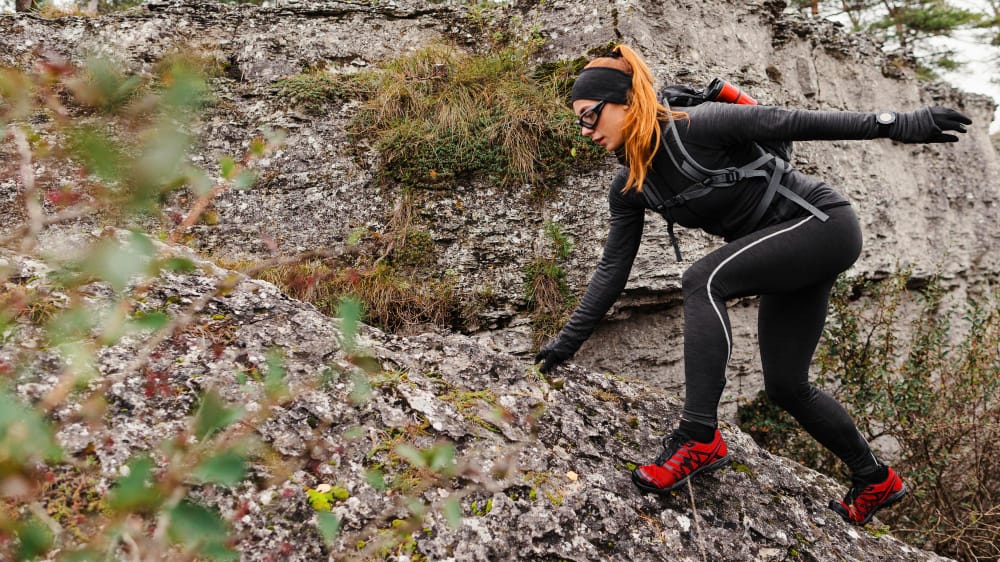
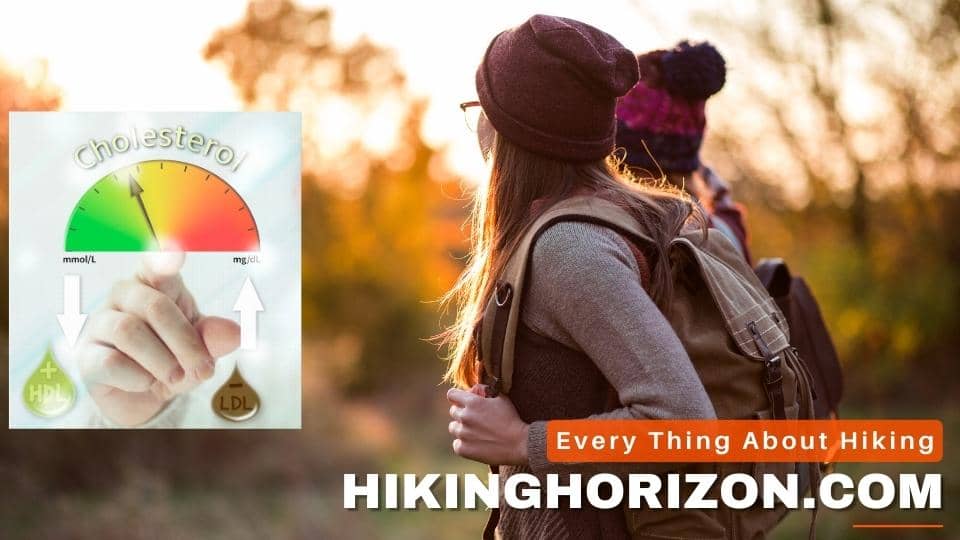
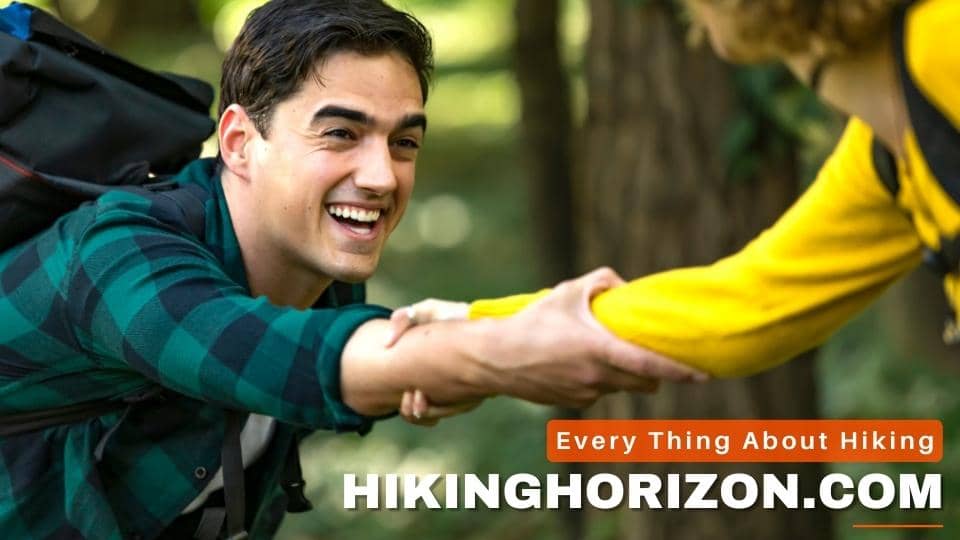
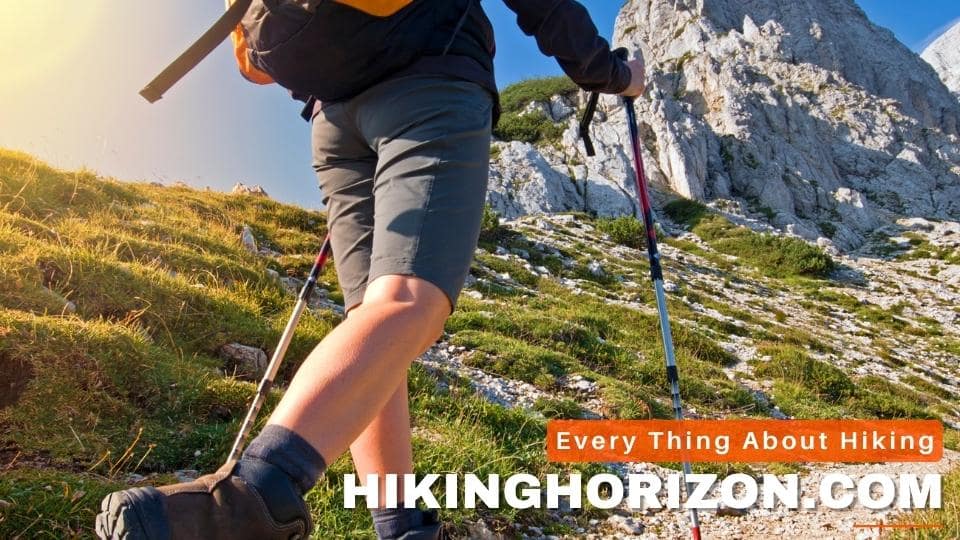
Your website is a feast for the mind, and I admire your dedication to greatness. Your future projects should go as well as the information you give.
Thank you for such appriciation.